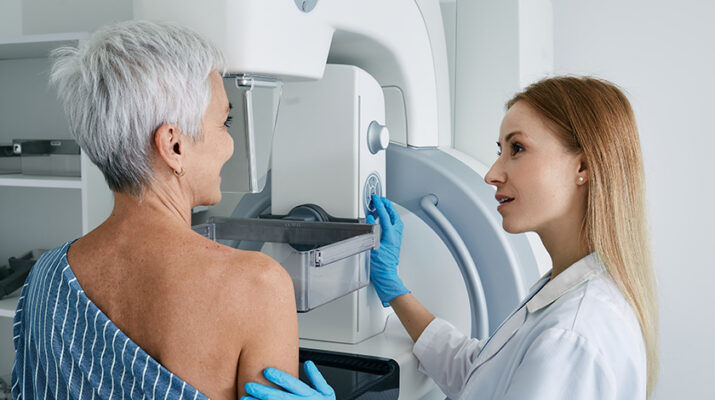A diagnosis of breast cancer comes with many tough questions, but one of the biggest is what stage your cancer is.
Millions of women struggle with such questions every year: Breast cancer is the most common cancer in women in the United States, with the sole exception of skin cancers, according to the American Cancer Society. It accounts for roughly one-third of all new female cancers each year.
Once you receive a breast cancer diagnosis, your doctor will determine the stage of your particular cancer using the results of your diagnostic tests. Knowing the specific stage of your cancer helps determine the best treatment options for you, as well as your expected survival rate.
The most common tool physicians use to stage breast cancer is the American Joint Committee on Cancer’s (AJCC) TNM system. T stands for the size of the tumor, N for whether the cancer has moved into lymph nodes, and M indicates whether the cancer has spread to other places in the body. Numbers or letters after T, N and M provide more details about each factor. Higher numbers mean the cancer is more advanced.
According to the American Society of Clinical Oncology (ASCO), breast cancer stages are broken down into five levels: Stages 0, 1, 2, 3 and 4. Below you will find expert guidance on each of the stages, along with the associated five-year relative survival rate.
Stage 0 breast cancer
In stage zero (0) breast cancer, also called noninvasive or in situ cancer, the disease is only in the ducts of the breast and has not spread to the surrounding breast tissue (Tis, N0, M0).
Stage 0 breast cancer survival rate is 99%.
Stage 1 breast cancer
Stage IA: In this stage, the tumor is small, but has invaded the breast tissue. There is none in the lymph nodes (T1, N0, M0).
Stage IB: The cancer has spread to the lymph nodes and is larger than 0.2 mm but less than 2 mm. Either there is no sign of a tumor in the breast, or it is 20 mm or smaller (T0 or T1, N1mi, M0).
Stage 1 breast cancer survival rate is 86% (Stage IB) to 99% (Stage IA).
Stage 2 breast cancer
Stage IIA:
• While no evidence of a tumor is found in the breast, the cancer has spread to one to three axillary (under arm) lymph nodes. The cancer hasn’t spread to other parts of the body (T0, N1, M0).
• A tumor of 20 mm or less is found in the breast, and the cancer is in one to three axillary lymph nodes (T1, N1, M0).
• While the tumor is larger (greater than 20 mm but not more than 50 mm), it has not spread to the axillary lymph nodes (T2, N0, M0).
Stage IIB:
• The tumor is greater than 20 mm but not larger than 50 mm. It is also found in one to three axillary lymph nodes (T2, N1, M0).
• The tumor is larger than 50 mm but none is found in the axillary lymph nodes (T3, N0, M0).
Stage 2 breast cancer survival rate is 86% to 99%, depending on whether it has spread to the lymph nodes.
Stage 3 breast cancer
Stage IIIA: This stage involves a tumor of any size which has spread to four to nine axillary lymph nodes or to internal mammary lymph nodes, but has not spread to other parts of the body (T0, T1, T2, or T3; N2; M0). This stage may also have a tumor larger than 50 mm which has spread to one to three axillary lymph nodes (T3, N1, M0).
Stage IIIB: The tumor has invaded the chest wall or has caused ulceration or swelling of the breast. There may or may not be cancer in as many as 9 axillary or internal mammary lymph nodes. It hasn’t spread to other parts of the body (T4; N0, N1 or N2; M0). It also may have been diagnosed as inflammatory breast cancer.
Stage IIIC: Any size tumor that has invaded 10 or more axillary lymph nodes, the internal mammary lymph nodes, or lymph nodes under the collarbone. It has not spread to other parts of the body (any T, N3, M0).
Stage 3 breast cancer survival rate is 86%.
Stage 4 breast cancer
This stage involves a tumor of any size. The cancer has spread to other organs, including the bones, brain, liver, lungs, distant lymph nodes or into the chest wall (any T, any N, M1). Metastatic breast cancer found when cancer is first diagnosed only occurs about 6% of the time and may be called de novo metastatic breast cancer. Usually, metastatic breast cancer isn’t found until after a previous diagnosis and treatment of early-stage breast cancer.
Stage 4 breast cancer survival rate is 30%.

